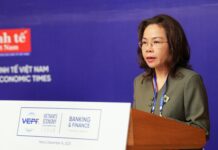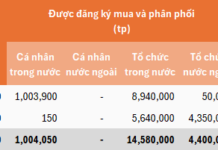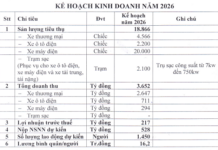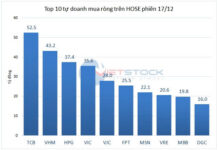The Saigon River Pedestrian Bridge connects Bach Dang Wharf Park (District 1) to the new Thu Thiem Urban Area’s riverside park (Thu Duc City). The bridge is approximately 261 meters long, with a main span of about 187 meters, and a steel truss. The cross-section of the bridge varies in width from 7 to 11 meters.
The total investment for the pedestrian bridge project is 996.9 billion VND, fully funded by an enterprise. The enterprise has completed the project proposal, which has been reviewed by the University of Transport Consultancy and Construction Limited Company.

Recently, the Ho Chi Minh City Department of Transport has proposed to the Ho Chi Minh City People’s Committee to approve the investment policy and assign relevant units to adjust the detailed planning and land use criteria to match the bridge design proposal.
Can Gio Bridge spans the Soai Rap River, connecting Can Gio and Nha Be districts. It is approximately 7.3 kilometers long, starting from Road 15B (parallel to Huynh Tan Phat Street in Nha Be District), then crossing the river to connect to Rung Sac Street in Can Gio. The total expected investment is over 10,500 billion VND in the form of a Build-Operate-Transfer (BOT) project.
Expected to be completed by 2028, the Can Gio Bridge will replace the Binh Khanh Ferry, providing a connection to the only island district of Ho Chi Minh City. In addition to improving transportation, the bridge will also boost the development of the Can Gio Seafront Urban Area Project and the Can Gio International Transit Port.

Recently, the Ho Chi Minh City Party Committee agreed to adjust the design of the Can Gio Bridge from a single-tower cable-stayed bridge to a two-tower cable-stayed bridge.
Thu Thiem 4 Bridge crosses the Saigon River, connecting the new Thu Thiem Urban Area (Thu Duc City) to District 7, with a total length of 2.16 kilometers (the main bridge is over 1.6 kilometers).
In a document sent to the Ministry of Transport to seek opinions on the investment plan for the Thu Thiem 4 Bridge, the Ho Chi Minh City People’s Committee stated that the bridge would be built with six lanes, a fixed 15-meter high clearance, and no lift mechanism.

The total investment for the Thu Thiem 4 Bridge is estimated at 4,840 billion VND, and it is expected to be completed by 2028, reducing travel time between Thu Duc and Binh Thanh districts and Districts 7, 8, Nha Be, and Binh Chanh.
The project will also help alleviate traffic congestion on existing routes such as Ton Duc Thang, Nguyen Tat Thanh, Khanh Hoi Bridge, and Huynh Tan Phat – Nguyen Van Linh streets.
Choose stocks for “Tet” festival celebrations
Investors should consider choosing stocks in the banking industry with good profitability, healthy real estate, and abundant clean land reserves. In addition, the group of stocks in infrastructure investment, iron and steel, and construction materials should also be considered.












































